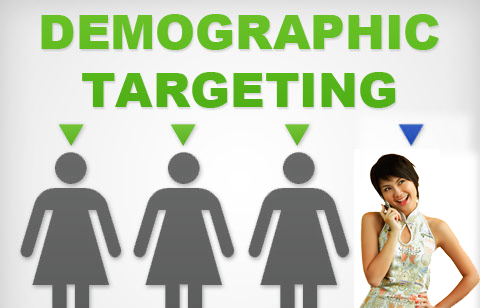 Retail pioneer John Wanamaker was famously quoted “Half the money I spend on advertising is wasted; the trouble is I don’t know which half.” It’s the dilemma of marketers whether they’re in retail or manufacturing, whether they’re spending tens of million dollars a year on marketing or just ten thousand.
Retail pioneer John Wanamaker was famously quoted “Half the money I spend on advertising is wasted; the trouble is I don’t know which half.” It’s the dilemma of marketers whether they’re in retail or manufacturing, whether they’re spending tens of million dollars a year on marketing or just ten thousand.
As catchy as the quote may be, it’s not really that difficult to parse the answer. After all, there are only two fundamental components to advertising: what you have to say and where (or to whom) you say it. The half most advertisers spend the bulk of their money on is the “where,” which really means the media. So when the advertising results in a resounding thud, all that expensive media gets the blame. I can’t tell you how many times I hear a new client tell us “I’ve run in radio and it doesn’t work” or “We don’t use billboards, that’s a waste of money.”
Gentle readers, here’s the simple truth: if the message is not compelling, you can quadruple your advertising spend and still get dismal results.
Let’s put it in human terms. The guy who’s popular at a big party will be popular at a small party. The guy who’s a bore at black tie gala will put people to sleep standing at a car wash. So, in short, it’s primarily all in the messaging. What you choose to do at this juncture is what will affect everything that follows. So here are some ways to think about making both halves of your advertising dollars work for you:
So, in essence, getting your money’s worth starts at the very beginning, not at the end. Putting the bulk of your focus on messaging, rather than media, will be much more rewarding. Oh, and while we’re at it, D-I-Y is pervasive – but hardly ever persuasive! Try this on for size: open up 5 trade or consumer magazines and tag or cutout 10 ads that stop you in your tracks… ones that convey a strong value proposition, ones that you wish your firm had done! My completely biased but nevertheless absolutely accurate guess is that all 90% of those ads you clipped out were created by a marketing or advertising agency.
Also, don’t substitute hard-core strategic homework for a clever headline. And don’t think that the media selection is wrong when the creative you’re placing in it is what’s sending your audience running in the wrong direction. (I’ve seen humble bus benches create insanely great response when used creatively.)
There. Now you know which half of your advertising needs more of your love.
####
Rolf Gutknecht is vice president, director of account services for LA ads. To discuss your thoughts with Rolf on this blog or any marketing matters, email via this link, or visit www.LAadsMarketing.com. You can also connect with Rolf on LinkedIn.
 So you have a horde of demographic data, but do you really understand: Who is your customer? This question is not as easily answered as you think.
So you have a horde of demographic data, but do you really understand: Who is your customer? This question is not as easily answered as you think.
If you’ve written a marketing plan in the past 10 years or so, you’ve probably described your company’s target audience like lots of other marketing people do. And by that I mean things like “adults 55-65 who enjoy eclectic rock music and listen to Pandora” or “men 25-40 who like to run or bicycle 2x per week” or “CFO’s of businesses with annual sales between $15-$25 million.”
While these descriptions all follow the format taught in Marketing 101 to MBA classes in universities around the country, they’re unfortunately all nearly worthless because they provide almost no relevant information for making strategic decisions. Yes, it’s important to have this kind of information be part of the target audience description, but every year, innumerable marketing directors automatically write up plans with these kinds of empty descriptions of their target audiences. And every year, these same companies run around trying to figure out why they’re not really connecting with their customers.
Why demographics aren’t enough
First of all, your customers aren’t demographics. They’re not age ranges…or job titles…or geographical regions…or salary brackets. They’re human beings. It’s almost ridiculous to have to say that, but companies are constantly unable to remember this basic fact. Consequently, these so-call customer-centric organizations continue to roll out downright uninspiring messages to their audiences. “Got (fill-in the blank)?” Or “Do you like to garden? Then you’ll love GroundHog Tiller”? Or, “Kangaroo Jumpers are designed for the active adult outdoor workout enthusiast.” Or, “Springboard provides IT professionals and developers with the platform and tools needed for server administration, application extensibility, and interoperability.” While good money is spent in creating online sites, digital advertising, offline marketing materials and media placements, customers roll their eyes and shake their heads in disbelief (or worse, simply ignore the messages) because they know marketing drivel when they see it–just like you do–and they quickly move on to something more fascinating and relevant.
To sum it up, demographic information is good to have because it’s helpful to know something about the people you’re targeting and it gives you a good foundation to build our buyer personas on. But in today’s world, mere demographics 1) don’t tell you what these people’s pain points are, 2) they don’t tell you about their personal goals, and 3) they don’t tell you about interests and style. That’s why demographics just aren’t enough. Real-life people (i.e. your wife/husband, your mother/father, heck, even you) don’t view themselves as demographics. So as marketers, we shouldn’t view them that way, either.
Getting to know your customer
If it’s important to connect with your customers so that they take the time to listen to what you have to say, you have to stop pushing uninspired marketing clichés on them and instead focus on understanding who they really are, how they really think, and what’s really important to them. That soccer mom driving the crossover SUV with 2.5 kids? Well, her name is Lori. Yes, she goes to early morning workout classes at her fitness club, but do you know why she goes? She’s also on Facebook at least twice per day, but do you know why? Stop making assumptions (because you’ll probably be way off) and start asking questions. Then, when you start to understand, you can get real in the way you talk to Lori. (FYI, Lori goes to early morning workout classes because…she worries about heart disease as she ages since her aunt died of a heart attack at 51, and she’s on Facebook twice per day because…she’s responsible for the social media activities for her company. Probably not what you thought, right?)
Everyone sees the same person
So once you better understand what’s going on in the minds of your audience, you can do a few things to ensure that this information doesn’t just sit in a binder on shelf, but rather that it becomes an everyday part of how your marketing activities are created and put to work.
One example, and a personal favorite of mine, is to create a “customer persona” – an example of the person that would interact with your product or service – with a name, face, and look to help your team connect with your target audience in a more direct and insightful way. In order to achieve this, you need to recognize (or at least imagine) that prospect’s personal and professional interests, priorities, aspirations, fears, motivations, goals, pain points, etc. These factors will have a major influence over what catches their attention when it comes to solving a business issue. Personas concentrate on what a user does, what frustrates the user, and what gives the user satisfaction. A good persona is a narrative that describes a person’s typical day and experiences. In short, bringing the “user” to life helps you better understand what drives your user so you can build around that. (Note: There are numerous customer persona examples that you can source online to show you how it’s done.)
As a result of creating a customer persona, your team no longer has to try and hold an abstract or numeric customer profile in their heads. Nope. All they have to do is ask, “What would Lori think about this?” This simple but important change can bring about significant differences in the way a company considers its customers during decision-making processes.
So, let’s try this again: who is your customer?
####
Rolf Gutknecht is vice president, director of account services for LA ads. To discuss your thoughts with Rolf on this blog or any marketing matters, email via this link, or visit www.LAadsMarketing.com. You can also connect with Rolf on LinkedIn.